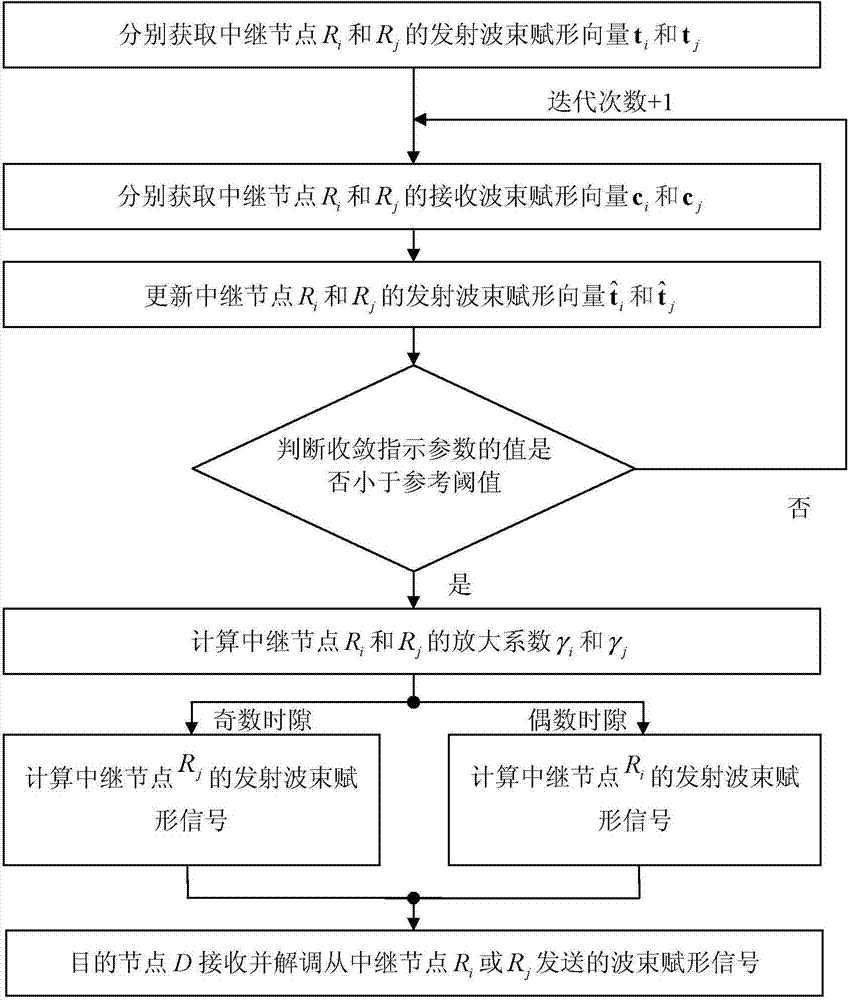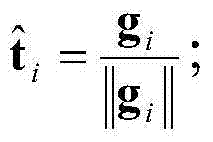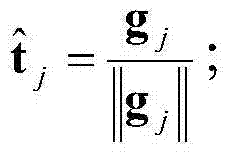Iterative elimination method and system for interference between MIMO relay communication nodes
A relay node and relay communication technology, applied in the field of iterative elimination, can solve the problem that multi-antenna relay nodes cannot be directly applied, and achieve the effects of reducing symbol error rate, optimizing estimated value, and improving performance
- Summary
- Abstract
- Description
- Claims
- Application Information
AI Technical Summary
Problems solved by technology
Method used
Image
Examples
Embodiment Construction
[0033] See picture 1. The present invention relates to a method for iterative elimination of interference between MIMO relay communication nodes, and its preferred embodiment includes the following steps:
[0034] Step A: via relay node R i Get relay node R i The transmit beamforming vector t i , and through the relay node R j Get relay node R j The transmit beamforming vector t j ;
[0035] Specifically, according to the following formula I i and formula I j Calculate the relay node R i and R j The transmit beamforming vector t i and transmit beamforming vector t j , which can make the receiving power of the destination node D the maximum; where, the formula I i for
[0036] t ^ i = g i | | g i | | ; ...
PUM
 Login to View More
Login to View More Abstract
Description
Claims
Application Information
 Login to View More
Login to View More - R&D
- Intellectual Property
- Life Sciences
- Materials
- Tech Scout
- Unparalleled Data Quality
- Higher Quality Content
- 60% Fewer Hallucinations
Browse by: Latest US Patents, China's latest patents, Technical Efficacy Thesaurus, Application Domain, Technology Topic, Popular Technical Reports.
© 2025 PatSnap. All rights reserved.Legal|Privacy policy|Modern Slavery Act Transparency Statement|Sitemap|About US| Contact US: help@patsnap.com



